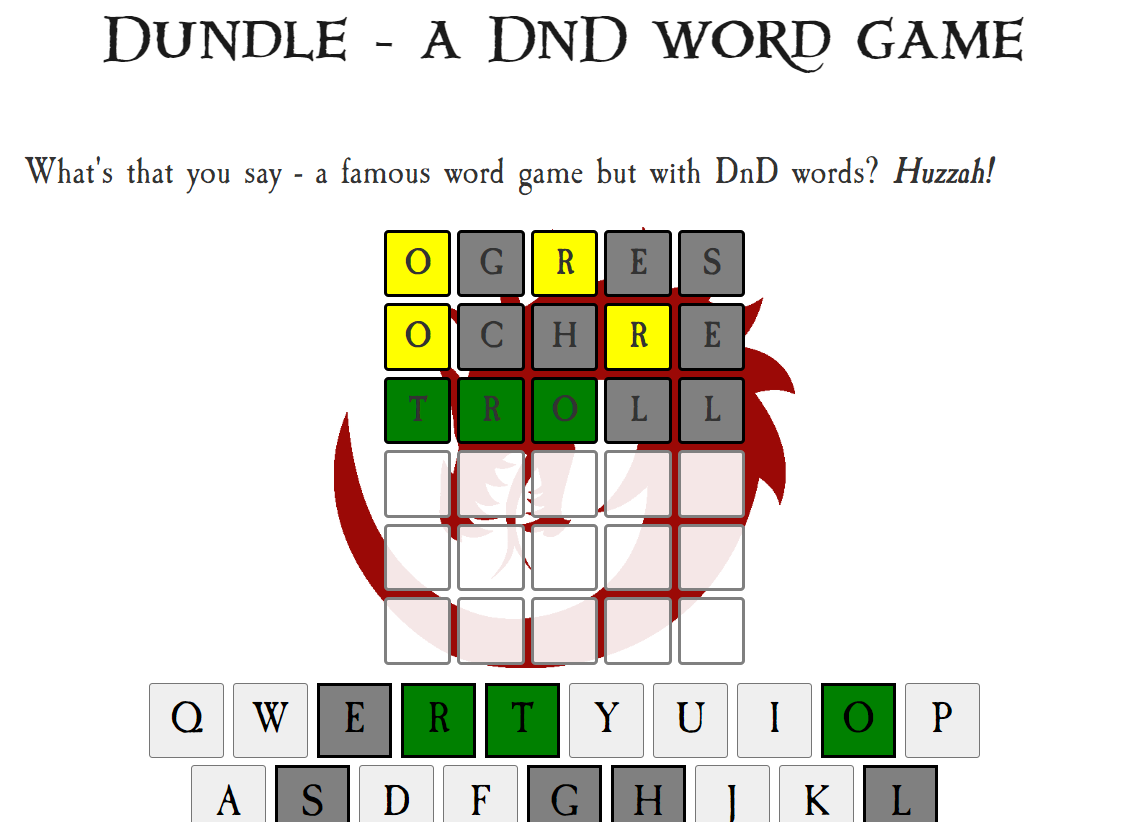A Review of Spelljammer Academy: Trial by Fire
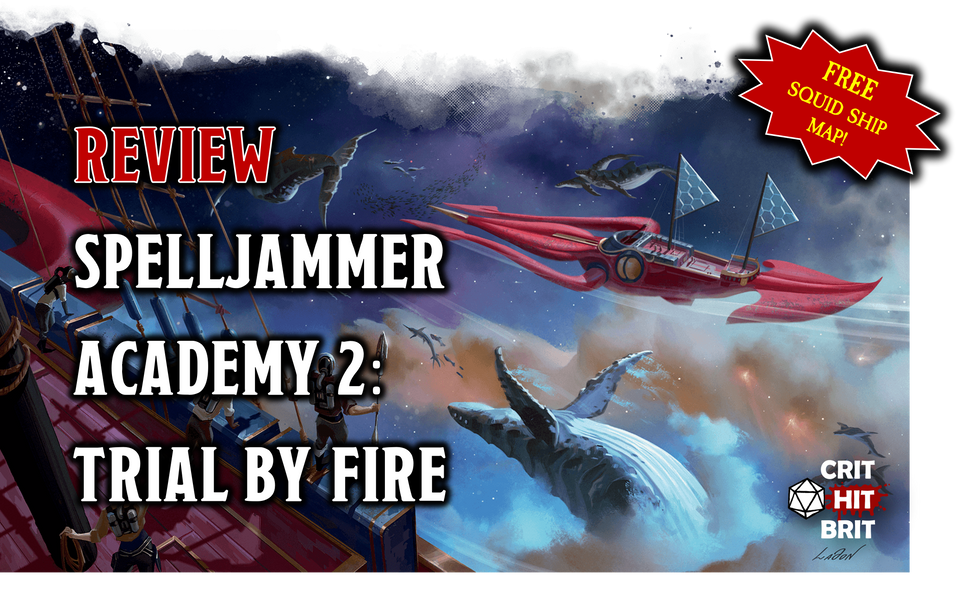
Spoiler alert! This article discusses the new Spelljammer adventure from WotC in detail, so any player cadets reading this may want to turn their ships now before we head into the depths of Wildspace spoiler territory.
The adventure used to be free on D&D Beyond but alas it has since gone offline. However, it is still available here if you need access:
- Link to the module on 5eTools: https://5e.tools/adventure.html#sja
- Link to a PDF of the module courtesy of Wolfen_Fenrisen on Reddit: https://www.reddit.com/r/spelljammer/comments/wjyam3/spelljammer_academypdf/
The second Spelljammer Academy adventure is out and we play-tested it over the weekend! In this article we talk about our experience running the adventure, together with some tips for other DMs planning to run the module. If you are looking for one of the other adventures in this series please use the links below:
- Adventure 1: Orientation
- Adventure 2: Trial by Fire
- Adventure 3: Realmspace Sortie
- Adventure 4: Behold H’Catha
TL;DR; In a rush? The latest installment of Spelljamming was great fun to play as an introduction to exploring and fighting in Wildspace. We found a few areas could have done with more explanation and the Spelljammer ship combat was fun but perhaps a little simple. If you are already an experienced Spelljammer from previous editions, you may want to customise this battle somewhat. To help DMs run this module, I also created a funky Squidship map - link below:
- Link to D&D Beyond module here: https://www.dndbeyond.com/sources/sja
- Download my free 🗺️maps here: take me to the maps
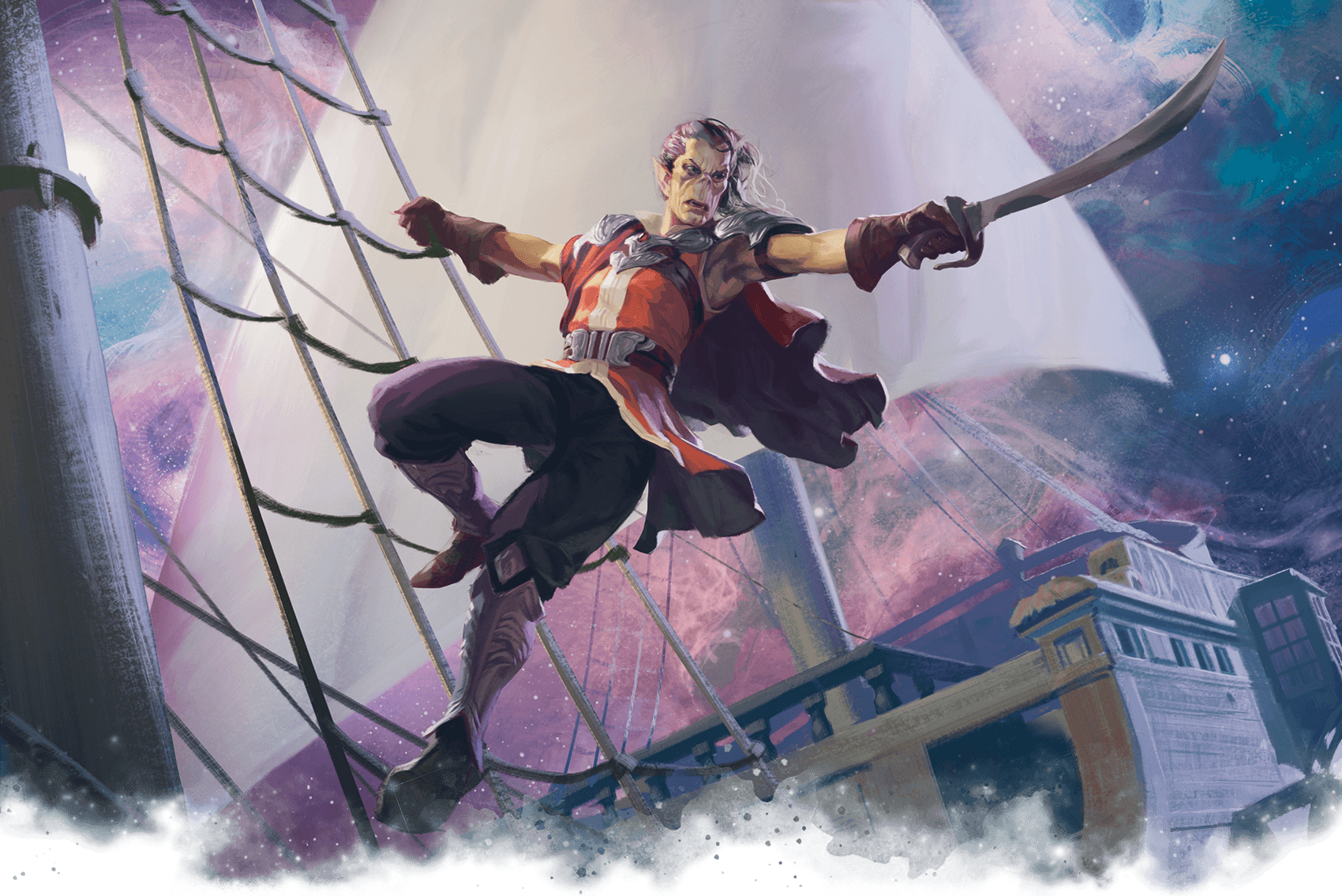
Summary:
“Trial by fire” is the second of the freebie adventures on D&D Beyond, designed for three to seven 2nd-level characters. This adventure runs on directly from the preceding one, and so if you have not played that it is recommended you go back and start there.
Play time: it took us around 2 hours
DM Prep time: 30-60 minutes
This second adventure continues the cadet's training program, taking them back into Wildspace (albeit simulated) where they face a mix of roleplay, skills-based encounters (for things such as navigation and traversing an asteroid field), and one climactic battle where the players are able to experience ship combat in Wildspace. This combat encounter is fun although it does use very simplified rules compared to the original Spelljammer ship combat rules, and as a result, I was left with quite a few questions which I’ll cover in the Tips section below in case you want to tweak it a little to address this. The adventure was quite “railroady”, but I guess this is in line with a training schedule so we’ll forgive them that. Again the maps are quite rudimentary (in fact they have been lifted almost unchanged from the 2E sourcebook line drawings), so I have remedied that with a nice new FREE full-colour battle map for your personal use!
Is it any good?
It’s a nice intro to Wildspace and the new aspects of Spelljammer travel and ship combat and my players and I enjoyed it. If I ran it again I would jazz up the combat encounter a little and I’ve suggested a couple of ways to do this below.
DM Tips for Running the Module
I have a few tips having run this adventure that will hopefully save you a little time and improve your game flow:
- Part 1: I ran this as written and it went well, including some nice roleplay opportunities. So my tip here is to focus your efforts on Part 2.
- Part 2:
- Print the handouts in advance: there are a couple of handouts used in Part 2 that are worth printing ahead of time; the Hammerhead player handout, and the score sheet that the DM will use.
- Assigning roles: each player has to be assigned a role and two of the roles available must be fulled by a single player (Captain and Spelljammer). If you have more than one player who wants one of these roles and it is not easily resolved, then run a skills check approach to decide who convinces either their crew (which will include around 10 NPC cadets, so a persuasion or intimidation would work well) or they could appeal to Tarto / Abizjn (e.g. via persuasion or deception).
- Skills-based challenges: there are a series of skills-based encounters at the start of Part 2. 5E for me is quite geared to combat encounters, and can leave skills-based encounters a bit dry and over in a couple of dice rolls. What I find works well to counter this is asking your players to describe how their character executes each skill check, and preparing some narrative notes ahead of time on what success or failure looks like. This approach can make these encounters into exciting narrative events, that just happen to have a few dice rolls behind them. “You hear a loud bang, followed immediately by splintering, creaking sounds as your hull smashes into an asteroid. You see a shower of splinters and pieces of broken wood explode out, following parabola defined by your ships gravity plane until they reach the ship’s grav-bubble perimeter where they fly straight into the void beyond, a halo of silent splinters”
- Number of crew on the ship: As written, “the characters arrive with another squad of six cadets”. This other crew is the one they are competing against. Depending on your interpretation, this can lead to the misconception that there are only the PCs crewing their Hammership. The Hammership is a large vessel and so this has some major implications, in particular in the combat encounter, since each siege weapon on the ship requires several crew members to operate it. To remedy this, take a look at Handout 1 in the adventure, and you will see it tells us that the Hammerhead ship has a crew of 15. So in my game, we had 15 crew (including the players) on the cadet ship. This enabled them to operate all of the siege weapons which made for an epic space battle!
- Ship movement during combat and “Spelljamming Speed”: the ship is referred to move “at Spelljamming speed” (aka warp speed) at various points. At my table when they saw the enemy ship they immediately suggested they would just warp speed their backsides outta there, since that would still meet the goals of the training task. The enemy ship would be a pointless encounter if that were the case, so it seems some detail is missing here regarding ship movement speeds. In previous Spelljammer editions, you could only travel at Spelljamming speed in a straight line, and as long as no large object was within a certain distance from you - i.e. as long as you were travelling in empty space, you could warp your way through it super fast (at around 4 million miles per hour to be exact!). However, there was a gotcha: if you came within a certain distance (I think 12,500 yards in 2E) of another large body such as a ship, the ship would instantly decelerate to “tactical speed” - this is the speed detailed in the ship stat blocks. So I suggest this same rule is adopted, which for all intents and purposes, means that while they can see the enemy ship, the players ship is bound to tactical movement only. In previous editions there were further rules around using movement to rotate the ship, and using hex grids, however, we played it without any of these and using approximate distances and it worked fine. I’d wager that some rules along the lines of the above will appear in the new rules system when released.
- What the heck is Damage Threshold? You may have noticed an attribute in the ship stat blocks for “Damage Threshold”. If you are the type of DM like me who has not memorised the entire DMG, then here is a little explanation to save you trying to work it out on the fly! DMG p247:
“An object with a Damage Threshold has immunity to all damage unless it takes an amount of damage from a single Attack or Effect equal to or greater than its Damage Threshold, in which case it takes damage as normal.”
Or to simplify further, you can just ignore Damage Threshold, and instead, adopt a blanket rule that making attacks directly against a ship using normal hand-held or ranged weapons (e.g. a sword or arrow), or low damage spells, does no damage.
- Jazzing up the combat a bit more: in my view, the ship vs ship combat was a little oversimplified and I was keen to spice it up. There are a few points to note here so I have broken them out in a separate section below.
Suggestions for Improved Ship Combat
If you run the combat as written, it can easily end up with just a to-and-fro between the two ships' siege weapons. This is still cool but can get a bit samey, and the PCs don’t have much autonomy to influence the outcomes over and above the dice rolls. So here are a few points that could help involve the players a little more:
- Allow casters to attack the other ship with in-range spells - this is technically allowed anyway, but not mentioned and so easily overlooked. Doing this gives some nice opportunities for spellcasters to shine, although think through the expected outcome of spells they are likely to cast since it will often be less clear than in non-Spelljammer D&D combat. For example, you may want to allow a Magic Missile may take out one or two of their crew which in turn may take one of their siege weapons out of action. Fire-based spells may start a fire, dealing fire damage to some crew members each go. Narrative theatre over tons of dice wins for me in this kind of scenario (even if you make out dice are being rolled!), but that is just my preference.
- Encourage a boarding- actually boarding and fighting the Githyanki enemies is an epic way to win the combat. Bear in mind you might want to “theatre” rather than roll for each of the NPC enemies and cadets since there are a lot of them (the Squid has 13 crew, so together there are 28 in total!). Instead you can just roll for NPCs directly engaged with the players. Ensure you have a battle map ready if you want to go this route - check out the map I have made for just such a battle at the bottom of this article, FREE for personal use (if you like it, please hit subscribe and I’ll keep you posted as new stuff becomes available)
- Consider using a simple Collateral Damage rule for siege weapons: In the original Spelljammer there were rollable tables for Siege Weapons that could trigger additional effects over and above the straight damage roll. Rather than introduce the full original rule, a simplified version such as the below would add another layer of theatre and fun to your players:
If a siege weapon attack roll succeeds by 3 or more (e.g. 18 or higher to hit against 15 AC) then roll a D8 to determine the additional collateral damage using the table below:
| Roll | Additional Effect |
|---|---|
| 1 - 3 | No additional effect |
| 4 | Ship movement reduced by 5 ft. |
| 5 | Ship unable to move on it's next turn. |
| 6 | 1d3 Deck Crew Casualties |
| 7 | Siege Weapon Disabled |
| 8 | Spelljamming Helm Disabled |
Conclusion
The latest installment of Spelljamming goodness has not disappointed, and was great fun to play as an introduction to exploring and fighting in Wildspace. There are a number of areas that can lead to confusion that this article offers guidance on. The Spelljammer ship combat was fun if a little simple and so if you are already an experienced Spelljammer from previous editions, this might be a bit lightweight for you and you may want to consider the additional suggestions above. If you haven’t already, check out the battle map I have made below for this adventure (free for personal use 😊) and hit subscribe if you found this useful and want to hear about upcoming updates!
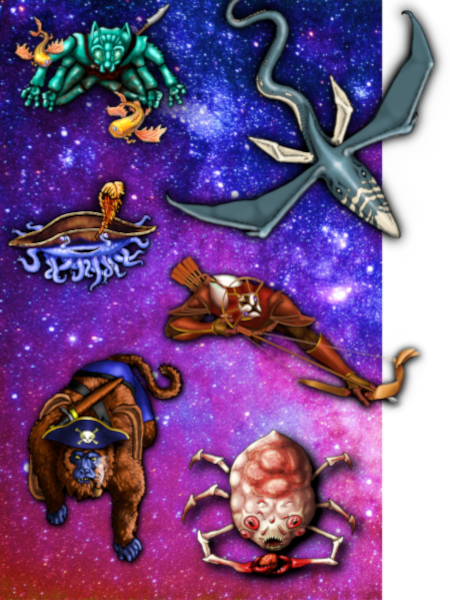
PLAYING SPELLJAMMER ON ROLL20?
Get every token you will need to play Light of Xaryxis - part 1!Maps for Adventure 2: Trial by Fire
Squidship map with grid (I run this 56x38 grid squares on Roll20):
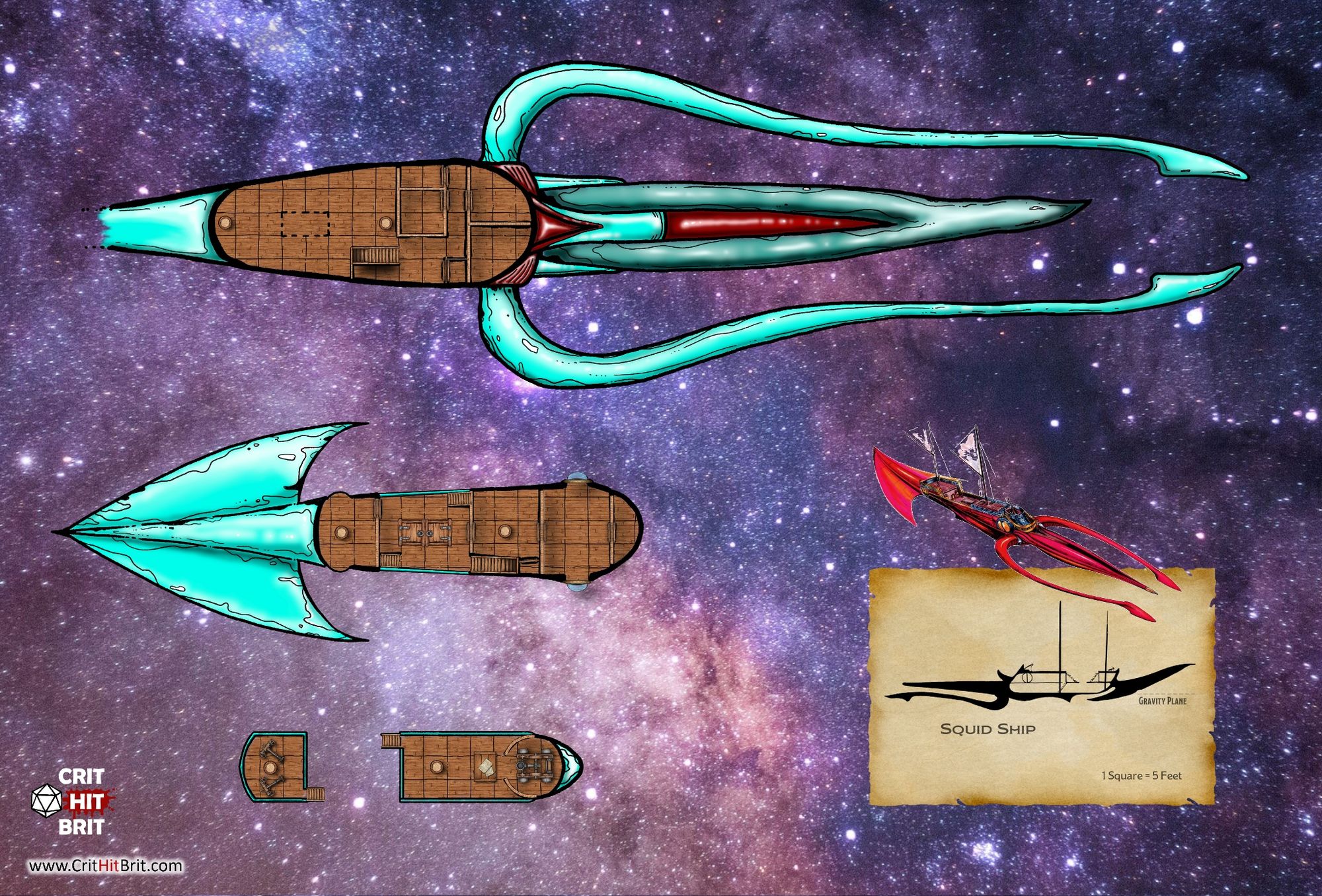
Like this? Subscribe and follow below!
... and follow us on social media:
Tried Dundle?
What's that you say - a 5-letter word game with a DnD theme? Try it hereNot quite time for farewell? Head over to the blog to hear what the bards are talking about:

